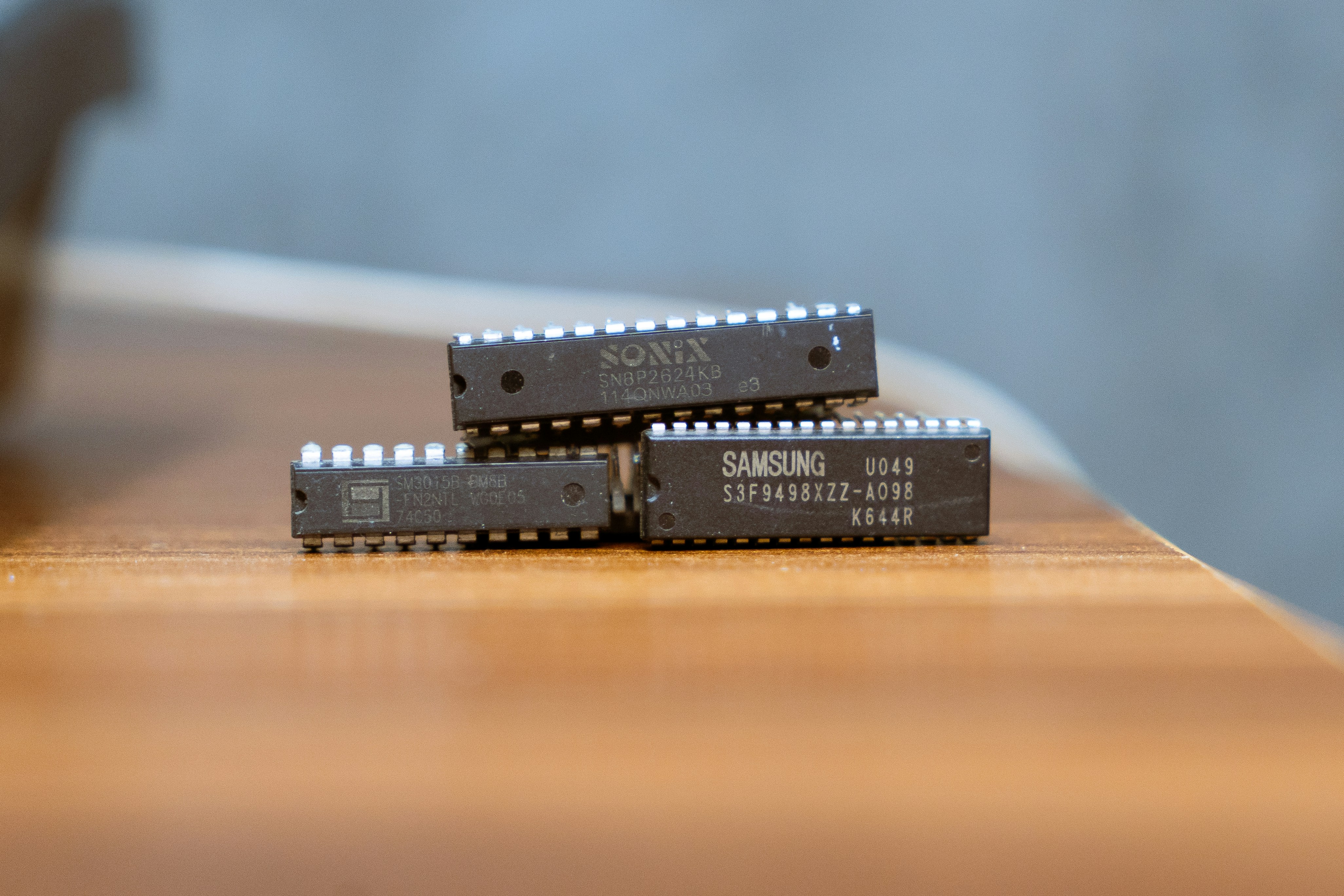
How to Present Semiconductor Solutions to Non-Technical Audiences: A Public Speaking Guide for Job Seekers
Semiconductors are the foundation of modern technology—from smartphones and solar panels to EVs and medical devices. But as the industry grows in complexity and global importance, the ability to communicate how these technologies work—and why they matter—has never been more essential.
For job seekers in the semiconductor sector, clear communication is now a vital soft skill. Whether you're an engineer, researcher, product manager, or commercial specialist, your ability to explain semiconductor solutions to non-technical stakeholders can set you apart in job interviews and on the job.
This guide will show you how to structure your presentations, simplify technical content, design effective visuals, and confidently address tough stakeholder questions in a way that builds trust, clarity, and impact.
Why Communication Skills Matter in Semiconductor Jobs
Semiconductor professionals often work with:
Business leaders and commercial partners
Government and regulatory bodies
Clients and procurement teams
Investors and policy-makers
Cross-functional teams (marketing, legal, supply chain)
These stakeholders may not understand gate oxide thickness, silicon-on-insulator design, or 7nm node advantages—but they’ll need to know:
What your solution does
How it improves performance, power, or yield
Why it’s cost-effective, scalable, or safer
Where it fits in the supply chain or product roadmap
Being able to explain the value, not just the technology, is essential in today’s UK job market.
When You’ll Be Asked to Present
During interviews for semiconductor roles in the UK, you might be asked to:
Present a past design or R&D project to a mixed panel
Walk through a fabrication or packaging process
Explain a process optimisation or yield improvement to a business audience
Pitch a semiconductor innovation to an investor or product team
Describe your work in manufacturing, EDA tools, or reliability testing in non-technical terms
These tasks test not only your technical competence but your ability to communicate clearly and confidently.
Structuring Your Semiconductor Presentation: The “C.H.I.P.” Framework
Use this four-part structure to guide your talk:
C – Challenge or Context
Start with a real-world problem or goal:
“Our client needed a low-power microcontroller that could operate continuously in a wearable health monitor without frequent recharging.”
Frame the need first—set the scene with business or user priorities.
H – How Your Solution Works
Describe your solution in accessible terms:
“We designed a new SoC with a high-efficiency sleep mode and ultra-low leakage current, reducing energy consumption by 40%.”
Avoid jargon—explain what it does and why that matters.
I – Impact or Improvement
Show the measurable results:
“Battery life increased from 2 days to 5 days, and production yield improved by 15% through layout optimisation.”
Use data, but tie it to commercial or operational value: performance, cost, efficiency, sustainability.
P – Path Forward or Practical Use
Explain scalability, deployment, or future use cases:
“The design is now being used in a range of IoT devices and has been qualified for mass production under TSMC’s 22nm process.”
Slide Design Tips for Semiconductor Presentations
Keep your slides clean, focused, and audience-appropriate.
✅ Use Diagrams & Visual Aids
Show chip architecture or system-level flow
Use block diagrams instead of full schematics
Illustrate changes in power, yield, or throughput
Add cross-sections to show packaging, layering, or thermal design
✅ Avoid Crowded Technical Slides
Replace data tables or design rule charts with:
Before/after visuals
Line graphs showing improvements
Icons for key metrics (e.g. power, cost, speed)
✅ Label Clearly and Use Colour Wisely
Green = efficiency improvements
Blue = data flows or processes
Red = issues or improvements addressed
Add clear slide titles like “Challenge,” “Our Approach,” or “Measured Results.”
✅ Use Plain English
Don’t say:
“This design uses FD-SOI with body biasing for adaptive threshold voltage.”
Instead say:
“We used a power-saving technique that adjusts the chip’s performance based on workload.”
Storytelling Techniques That Work
Even in highly technical fields like semiconductors, stories help audiences remember what matters.
Use a “Problem–Solution–Benefit” Narrative
Problem:
“Smartwatches struggled to track sleep accurately due to short battery life and sensor noise.”
Solution:
“We co-designed a low-noise analog front end with a new sensor interface to boost accuracy.”
Benefit:
“The new chip improved sleep detection by 30% and doubled battery life—making it viable for 24/7 use.”
Use Analogies to Clarify Concepts
Transistor = A light switch controlled by a signal
Logic gates = Decision-makers in a digital conversation
Wafer yield = Like baking a tray of biscuits—if too many burn, you lose profit
Choose just 1–2 analogies per presentation and explain how they relate to the topic.
Make it Human and Industry-Relevant
“Our redesign helped our automotive client prevent recall risks by improving chip heat tolerance—saving £5M in potential warranty claims.”
Or:
“Faster wafer throughput in our process allowed the fab to meet rising demand for 5G RF modules.”
Handling Non-Technical Questions in Interviews
Expect to hear:
“How does this help our end product?”
“Is this manufacturable at scale?”
“Will this reduce cost or increase margin?”
“What happens if the material fails?”
“Can this process be automated?”
How to Answer Effectively
✅ Link to Value
“Our improvement cuts leakage current, enabling longer battery life in consumer devices—addressing a key user demand.”
✅ Show Scalability
“The design has been simulated for 65nm and 28nm processes and is compatible with our client’s existing fab partners.”
✅ Speak to Reliability & Safety
“We used accelerated ageing tests to verify thermal limits and modelled electrostatic discharge resilience under IEC standards.”
✅ Translate Specs to Business
“Reducing die area by 8% may not sound like much—but over 10 million units, it saves over £300,000 in wafer costs.”
Practising Your Semiconductor Presentation
✅ Rehearse with a Non-Technical Peer
Get feedback on:
Clarity of explanation
Visual aids
What they remember or care about
What they’d ask if they were a stakeholder
✅ Record and Review
Watch for:
Use of acronyms without explanation
Slides with too much data
Rushed technical points
Lack of focus on benefits
✅ Time Your Talk
Most interview presentations are 5–10 minutes. Aim for:
1–2 mins: Problem & context
2–3 mins: Approach
2 mins: Results
1–2 mins: Questions or next steps
What UK Employers Are Looking For
In semiconductor job interviews, especially in roles involving innovation, manufacturing, or systems integration, interviewers want to see:
Technical confidence without jargon overload
Awareness of commercial or operational goals
Clear presentation style
Ability to collaborate with other disciplines
Understanding of where your work fits in the bigger picture
These soft skills make you more effective in the real world—not just the lab.
Real UK Interview Examples
🔹 Analog IC Design Engineer
“Walk us through a circuit block you designed and explain how it improves performance.”
Tip: Focus on signal clarity, power consumption, and impact on end application.
🔹 Semiconductor Process Engineer
“Present an optimisation you led on a manufacturing line.”
Tip: Use visuals, share measurable yield or cycle-time improvements, and explain ROI.
🔹 Graduate Role – Semiconductor Consultancy
“Explain a technical concept (e.g. Moore’s Law or lithography) to a non-engineer.”
Tip: Use analogies, timelines, and plain language to show understanding and empathy.
Common Mistakes to Avoid
❌ Overusing Acronyms
Define terms like TSV, FDSOI, CMP, EDA—or avoid them unless essential.
❌ Too Much Detail, Too Soon
Don’t start with transistor specs—start with the product need or market problem.
❌ Slides as Data Dumps
Charts and spreadsheets are not persuasive unless clearly summarised.
❌ Skipping the Business Case
Always link improvements to customer satisfaction, product differentiation, or cost savings.
Final Tips for a Strong Delivery
Speak slowly—especially when explaining a new concept
Pause to let key messages land
Use “So what?” to keep your content value-driven
End with a summary of your contribution and impact
Prepare for Q&A by anticipating basic, business, and future-oriented questions
Soft Skills You’ll Build
By mastering this style of communication, you’ll also strengthen:
Stakeholder engagement
Team collaboration
Cross-functional leadership
Presentation confidence
Customer-focused innovation
These are qualities that employers look for when promoting, funding, or hiring in senior roles.
Conclusion: Speak Chips, Think Impact
Semiconductors power the future—but it’s your job to power understanding.
By explaining your work with clarity, confidence, and context, you’ll become not just a brilliant engineer—but a trusted contributor to commercial success and innovation.
Ready to Find Your Next Semiconductor Job?
Explore UK semiconductor roles at www.semiconductorjobs.co.uk, where technical excellence and communication ability are both key to building the future of electronics.
Design faster. Explain better. Get hired.


